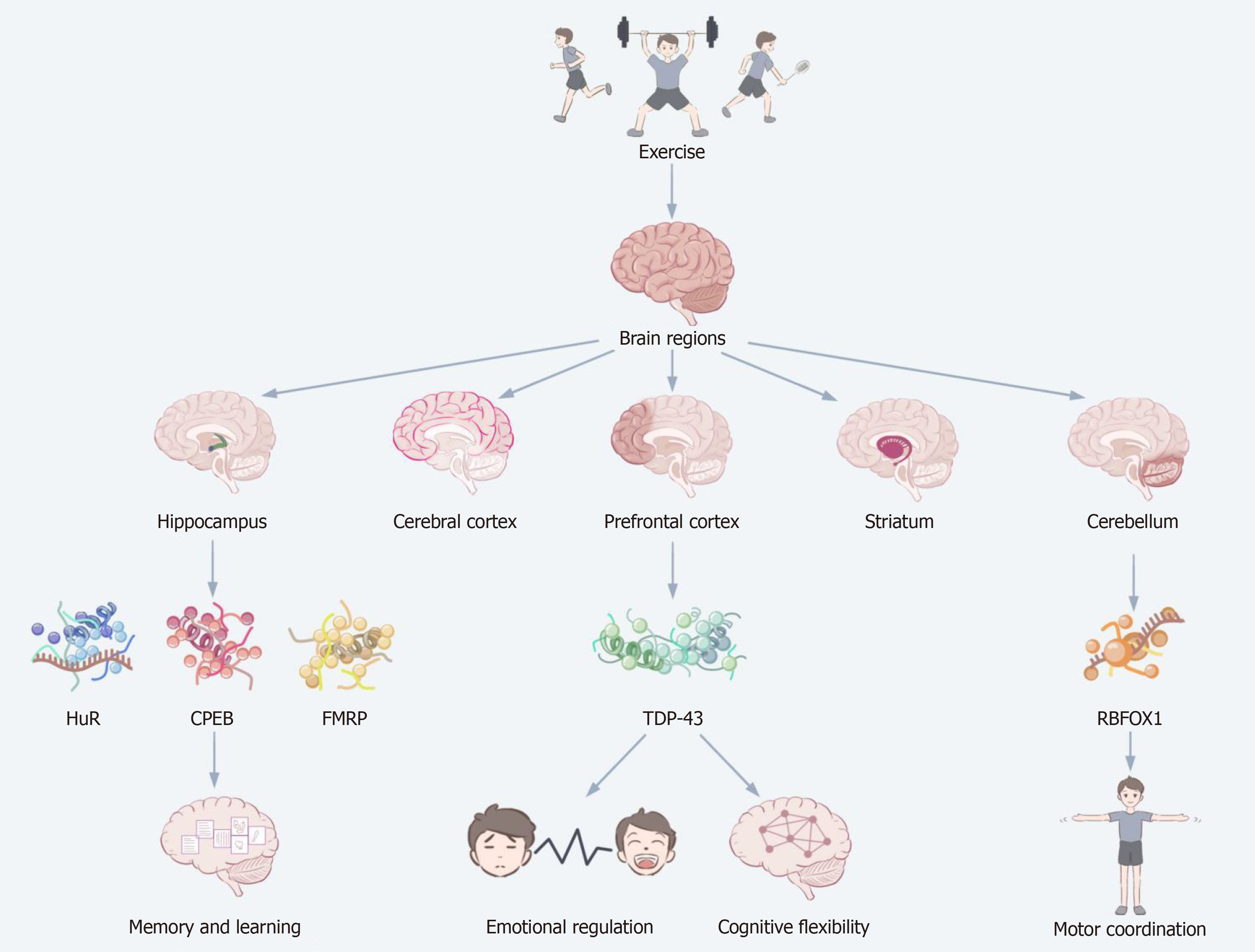Copyright
©The Author(s) 2025.
World J Psychiatry. Sep 19, 2025; 15(9): 107498
Published online Sep 19, 2025. doi: 10.5498/wjp.v15.i9.107498
Published online Sep 19, 2025. doi: 10.5498/wjp.v15.i9.107498
Figure 4 Mechanisms of exercise-induced changes in brain RNA binding proteins.
This figure demonstrates how exercise exerts a multilevel modulatory effect on brain function by shaping RNA binding protein (RBP) expression in different brain regions. Exercise activates multiple brain regions, namely the hippocampus, prefrontal cortex, cerebral cortex, striatum, and cerebellum, with each region responding uniquely to the expression of RBPs. In the hippocampus, enhanced expression of RBPs such as human antigen R, CPEB, and cytoplasmic polyadenylation element-binding protein enhances memory and learning ability; in the prefrontal cortex, the role of TAR DNA-binding protein 43 contributes to emotion regulation and cognitive flexibility; and in the cerebellum, the regulation of RNA binding fox-1 homolog contributes to motor coordination. This figure reveals the region-specific regulation of RBPs in the brain by exercise, which in turn has a profound effect on neural function. HuR: Human antigen R; CPEB: Cytoplasmic polyadenylation element-binding protein; FMRP: Fragile X mental retardation protein; TDP-43: TAR DNA-binding protein 43; RBFOX1: RNA binding fox-1 homolog.
- Citation: Lu Y, Kong JD, Zhao LN. Role of RNA-binding proteins in exercise-induced mRNA regulation: Unveiling biomarkers and therapeutic targets for schizophrenia. World J Psychiatry 2025; 15(9): 107498
- URL: https://www.wjgnet.com/2220-3206/full/v15/i9/107498.htm
- DOI: https://dx.doi.org/10.5498/wjp.v15.i9.107498









